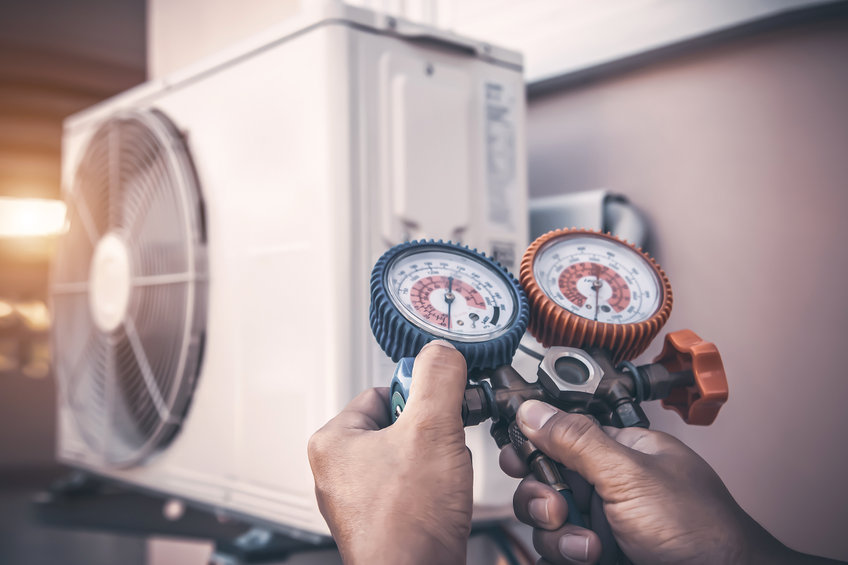If you suspect that you have been exposed to mold, seeking medical attention as soon as possible is crucial.
Mold exposure symptoms can vary from mild to severe and can affect your respiratory system, skin, and overall health.
If you are experiencing any symptoms such as coughing, wheezing, or skin irritation, it is important to see a doctor to properly diagnose and treat the issue.
Protect your health by taking mold exposure seriously and seeking medical attention when necessary.
- If you are experiencing persistent mold-related symptoms, it is important to see a doctor.
- Mold exposure can cause respiratory, neurological and other health problems.
- Symptoms can range from mild to severe, and can include coughing, wheezing, headaches, and memory problems.
- A doctor can evaluate and diagnose your symptoms, and may recommend a variety of treatment options.
- In some cases, mold exposure can lead to serious, long-term health issues, so it is important to seek medical care if you suspect you’ve been exposed to mold.
Signs and Symptoms of Mold Exposure
Symptoms of mold exposure can vary greatly depending on the individual and the amount of exposure they have experienced.
Some of the most common symptoms include respiratory issues such as coughing, wheezing, and shortness of breath.
Other symptoms can include skin irritation, headaches, and sinus infections.
In more severe cases, individuals may experience difficulty concentrating or memory loss.
It is important to note that these symptoms can also be caused by other factors, so it is important to seek medical advice if you suspect mold exposure.
One potential way to identify mold exposure is through the presence of a musty odor.
If you notice this smell in your home or workplace, it is important to have it inspected in case there is a mold infestation.
In addition, visible evidence of mold, such as black spots or a fuzzy texture, can also indicate exposure.
Mold can grow in damp areas, so be sure to check places such as the bathroom or basement for any signs.
It is important to address mold exposure as soon as possible, as prolonged exposure can lead to more serious health problems.
For example, people with allergies or asthma may experience worsening of their symptoms with prolonged mold exposure.
In addition, some types of mold produce mycotoxins, which can be harmful to human health.
Preventing mold growth is the best way to prevent exposure.
This can be done by reducing moisture in the home or workplace.
Using a dehumidifier or improving ventilation can help to reduce dampness.
Cleaning up any mold as soon as it is spotted is also important to prevent further growth.
If you do find mold in your home or workplace, it is important to hire a professional to handle the remediation process.
In summary, mold exposure can lead to a variety of symptoms, including respiratory issues, skin irritation, and difficulty concentrating.
Identifying and preventing mold growth is crucial for maintaining a healthy environment.
Be sure to seek professional assistance if you suspect mold exposure, and take steps to reduce moisture in your home or workplace to prevent future growth.

How to Test for Mold in Your Home
To test for mold in your home, there are a few steps you can take.
Firstly, you should be on the lookout for any signs of mold growth, such as a musty odor or visible mold patches on surfaces.
If you suspect that there is mold in your home, the next step would be to conduct a mold test.
You can purchase a DIY mold test kit from most hardware stores or online, which usually consists of a petri dish and a swab.
Alternatively, you can hire a professional mold inspector to conduct a more thorough test.
When using a DIY mold test kit, ensure that you follow the instructions carefully to obtain accurate results.
Typically, you will need to place the petri dish in the suspected area for an extended period, usually around one week.
After this time, use the swab to collect a sample of any visible mold growth and return it to the petri dish.
Seal the dish and wait for a few days to allow the mold to grow.
If mold has grown on the dish, it may indicate there is mold present in your home.
Another way to test for mold is through environmental testing.
This method involves collecting air samples to determine the number and type of mold spores present in the air.
Environmental testing is more comprehensive and can identify mold growth hidden behind walls or in other inaccessible areas.
It can also provide useful information on the cause of mold growth, such as high humidity levels or water leaks.
In conclusion, testing for mold in your home is an important step in maintaining a healthy living environment.
By identifying the presence of mold, you can take the necessary steps to have it removed and prevent any potential health risks.
Whether you choose to use a DIY mold test kit or hire a professional, ensure that you follow all the necessary precautions, including wearing protective gear and sealing off the affected area.
Remember, mold can be harmful to your health, so don’t take any chances when it comes to testing for it in your home.
When To See A Doctor For Mold Exposure
If you suspect mold exposure, it is essential to seek medical attention promptly.
Symptoms of mold exposure vary from individual to individual, but they can range from mild irritations to severe respiratory issues.
Some common symptoms include nasal congestion, sneezing, coughing, wheezing, headaches, sore throat, skin irritation, and fatigue.
If you or anyone in your family is experiencing any of these symptoms, you should consider seeing a doctor as soon as possible.
Individuals with pre-existing health conditions such as allergies, asthma, and compromised immune systems are more susceptible to mold exposure and its negative effects.
For example, mold exposure can trigger severe asthma attacks, especially in children.
Older adults with respiratory issues are also at a higher risk of developing severe symptoms.
If you or anyone in your family belongs to these groups, it is crucial to seek medical attention immediately.
Identifying the source of the mold exposure is just as critical as seeking medical treatment.
Mold thrives in moist environments and can grow on damp surfaces, including walls, carpets, ceilings, and furniture.
It is essential to locate the source of mold growth in your home and eliminate it as soon as possible.
If the mold exposure is due to a leaky roof, burst pipe, or other structural issues, you’ll need to call a professional to make repairs.
Failure to identify and eliminate the source of mold can cause the infection to return, making it challenging to eradicate.
In summary, mold exposure can cause severe health risks if not addressed promptly.
If you or anyone in your home is exhibiting any of the above symptoms, don’t hesitate to seek medical attention.
Also, identify the source of the mold growth and eliminate it as soon as possible.
By taking these simple steps, you can prevent further infection and promote good health in your home.
You’ll also like: What Kind Of Doctor Treats Parathyroid Disease
Prevention Techniques for Mold Growth
Preventing mold growth is essential for maintaining a healthy living environment.
It is crucial to identify the causes of mold and take preventive measures to avoid its growth.
Moisture plays a significant role in the growth of mold.
Controlling humidity levels in the house can prevent mold growth.
Make sure to keep the air conditioning systems, air ducts, and dehumidifiers clean and in good working condition.
Leaks, water damage, and flooding can also contribute to mold growth.
It is essential to repair leaks and water damage immediately to prevent mold growth.
Using high-quality mold-resistant paint and building materials can also help prevent mold growth.
Regularly cleaning and maintaining the house can also help prevent mold growth.
Cleaning bathrooms, kitchens, and other areas prone to moisture with anti-fungal cleaners can prevent mold growth.
Furthermore, regularly cleaning vents, fans, and air filters can also help prevent mold growth.
It is crucial to identify areas where mold growth is most likely to occur.
Basements, attics, and crawl spaces are areas where mold growth is more likely to occur.
It is recommended to regularly check these areas for signs of mold growth and take prompt action to prevent it.
Monitoring indoor humidity levels is also very important in preventing mold growth.
Keep the indoor humidity levels between 30-50% using an indoor humidity meter.
If the humidity levels are too high, it is necessary to use dehumidifiers to lower the levels.
In conclusion, mold growth is a common problem that can lead to serious health issues.
Preventive measures, such as controlling humidity levels, repairing leaks, using mold-resistant materials, and regularly cleaning and maintaining the house, can help prevent mold growth.
Identifying areas prone to mold growth and monitoring indoor humidity levels can also help prevent mold growth.
By following these prevention techniques, you can maintain a mold-free and healthy living environment.
You’ll also like: What Kind Of Doctor Does A Vasectomy
Possible Health Risks of Mold Exposure
Mold is a type of fungus that grows in damp and humid environments.
While it is a common problem in many households, it can also pose serious health risks to individuals.
Exposure to mold can cause a range of health problems such as allergic reactions, respiratory problems, and even neurological issues.
People who are at a higher risk of experiencing health problems due to mold exposure include children, the elderly, pregnant women, and individuals with weakened immune systems.
One of the main health risks of mold exposure is allergic reactions.
When exposed to mold, individuals may experience symptoms such as sneezing, runny nose, itchy eyes, and skin rashes.
These symptoms are caused by the body’s immune system reacting to the mold spores.
Exposure to mold can also cause respiratory problems such as asthma and lung infections.
Mold spores can irritate the lungs and cause inflammation, making it difficult for individuals to breathe.
Those with pre-existing respiratory conditions are particularly vulnerable to the health risks of mold exposure.
Furthermore, exposure to mold can also have neurological effects.
Studies have shown that certain types of mold can produce mycotoxins that can affect the nervous system.
Symptoms of neurological problems include memory loss, confusion, and even seizures.
It is important to note that the health risks of mold exposure can vary depending on the type and amount of mold present.
Black mold, for instance, is known to be particularly harmful and can cause severe symptoms even in healthy individuals.
In order to prevent mold growth and avoid its health risks, it is important to keep indoor spaces clean and dry.
Fixing leaks and controlling humidity can also help to prevent mold growth.
If mold is already present, it is important to clean it up promptly and effectively to minimize risks.
In conclusion, mold exposure can pose serious health risks ranging from allergic reactions to neurological problems.
It is important to be aware of the potential risks of mold exposure and take preventive measures to avoid its growth.
If mold is already present, it should be dealt with immediately to minimize health risks.
You’ll also like:









